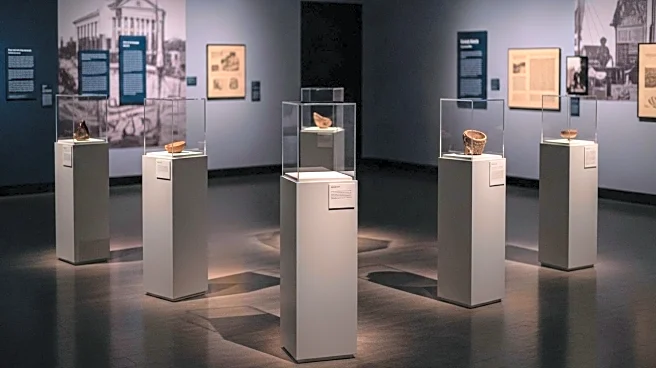What is the story about?
What's Happening?
Ken Gonzales-Day's exhibition at USC Fisher Museum of Art, titled 'History's Nevermade,' presents a retrospective of the artist's work focusing on social erasure in American history. Gonzales-Day alters historical photographs of lynching, removing the victims and ropes to highlight the mob and societal complicity. His work challenges viewers to reconsider identity and historical narratives, emphasizing the erasure of race, gender, and class in American life. The exhibition showcases Gonzales-Day's innovative approach to art, using erasure as a tool to provoke thought and discussion.
Why It's Important?
The exhibition is significant as it addresses the ongoing discourse on identity and historical memory in the United States. Gonzales-Day's work sheds light on the brutal history of lynching and the societal structures that allowed such acts to occur. By focusing on the erasure of victims, the artist prompts viewers to reflect on the broader implications of historical violence and the narratives that have been overlooked or forgotten. This exhibition is timely, given current discussions on race and social justice, and contributes to the understanding of America's complex past.
Beyond the Headlines
Gonzales-Day's work not only revisits historical events but also challenges contemporary viewers to confront the legacy of racial violence and erasure. The exhibition raises ethical questions about representation and memory, encouraging a deeper examination of how history is recorded and remembered. It also highlights the role of art in addressing social issues and fostering dialogue about identity and justice.
AI Generated Content
Do you find this article useful?















